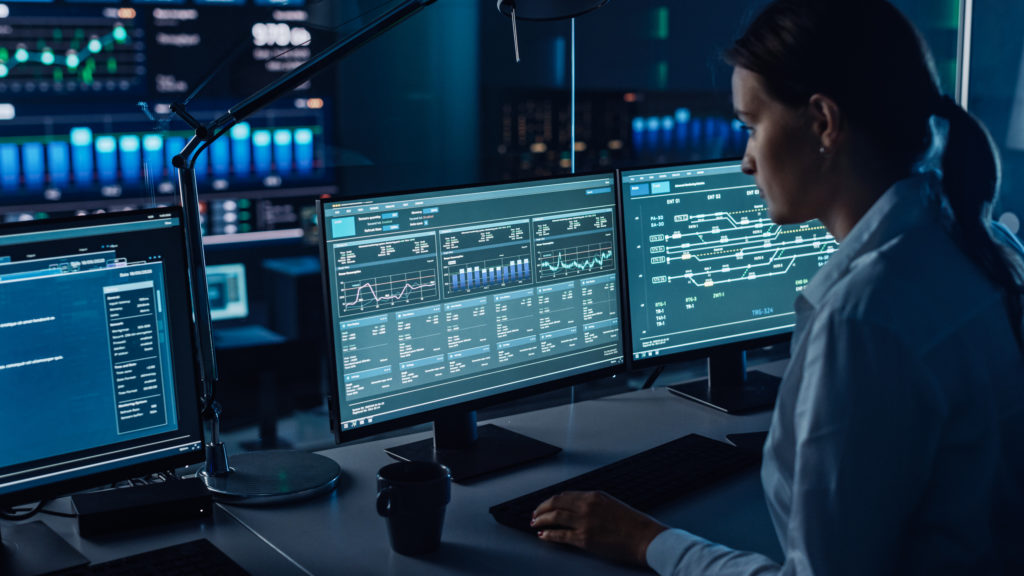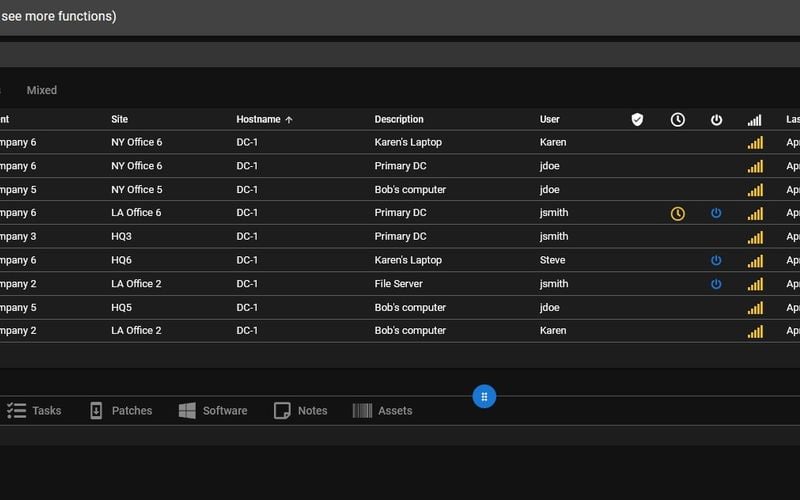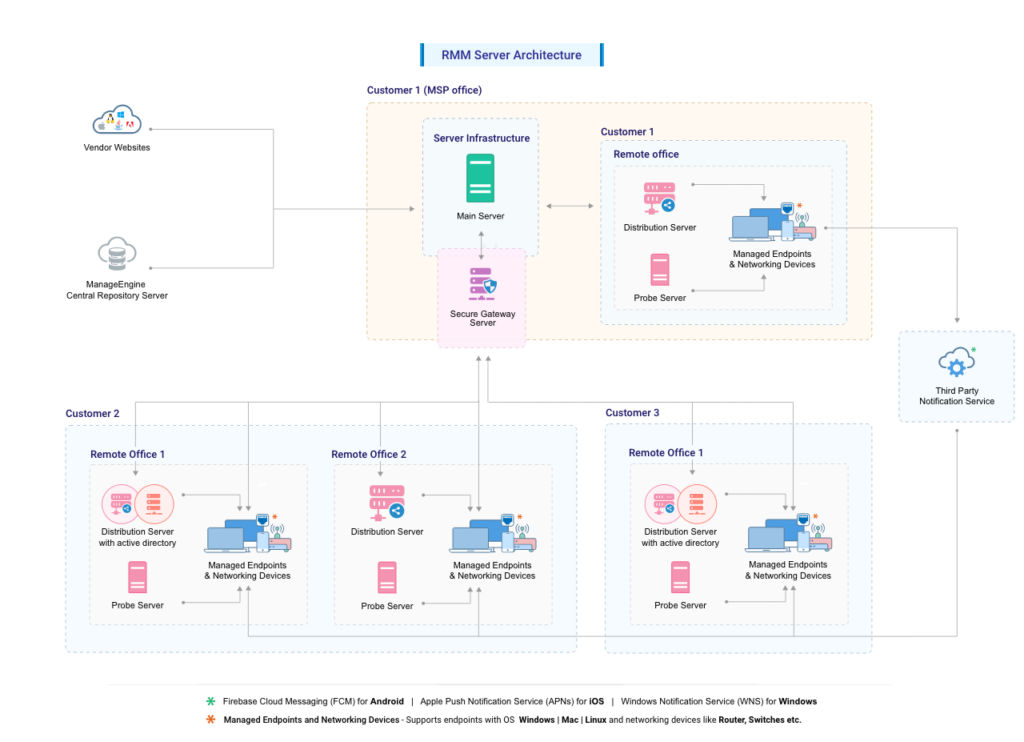Training Teams on RMM is a crucial step towards building proficient professionals in the realm of Remote Monitoring and Management. As businesses increasingly rely on technology for operational efficiency, equipping teams with essential skills and knowledge becomes paramount. This training empowers teams to tackle challenges head-on and ensures that organizations can maximize their RMM capabilities.
In this piece, we will explore the training objectives, methodologies, and tools necessary for effective RMM training. From identifying key competencies to employing various training techniques, the focus will be on fostering a culture of continuous learning and development within RMM teams.
Training Objectives for RMM Teams
In the rapidly evolving landscape of Remote Monitoring and Management (RMM), equipping teams with the right skills is crucial for success. The training objectives for RMM teams are designed to enhance their capabilities, ensuring they can effectively manage IT infrastructures and respond to challenges with agility. This approach not only improves individual performance but also elevates the entire team’s efficiency and productivity.Identifying essential skills is the first step in creating a robust training program for RMM professionals.
These skills encompass both technical competencies and soft skills necessary for effective communication and problem-solving.
Understanding the intricacies of business performance is crucial, and one effective way to achieve this is through Monthly RMM Reports. These reports not only provide essential data but also highlight trends and insights that can drive strategic decisions. Regularly reviewing these reports allows businesses to stay ahead and adapt to market dynamics effectively.
Essential Skills Required for RMM Professionals
To thrive as an RMM professional, individuals must possess a diverse skill set that includes both technical and interpersonal skills. The following skills are vital for effective performance in RMM roles:
- Technical Proficiency: A strong foundation in IT systems, networking, and cybersecurity principles is essential for managing and troubleshooting remote systems.
- Analytical Skills: The ability to analyze data and identify trends is critical for proactive system management and decision-making.
- Problem-Solving Abilities: RMM professionals must quickly diagnose and resolve issues, often under pressure, to minimize downtime.
- Communication Skills: Clear communication with clients and team members is vital for conveying technical information and collaborating effectively.
- Time Management: Balancing multiple tasks and prioritizing effectively ensures that all critical issues are addressed promptly.
Designing a Training Plan
Crafting an effective training plan requires assessing the current skill levels of team members and identifying gaps. A comprehensive training plan should include various learning methodologies to cater to different learning styles and preferences.The following components are crucial in designing an effective training plan:
- Needs Assessment: Evaluate the existing skills of team members against the essential skills identified. This assessment helps in tailoring the training content.
- Learning Objectives: Define clear, measurable objectives that Artikel what participants should achieve by the end of the training.
- Diverse Training Methods: Incorporate a mix of training methods such as hands-on workshops, online courses, and interactive seminars to enhance engagement and knowledge retention.
- Resource Allocation: Allocate sufficient resources, including time and budget, to ensure the training program is adequately supported.
- Continuous Learning: Establish pathways for ongoing education and skill development beyond the initial training program, encouraging a culture of learning.
Measuring the Effectiveness of Training Programs
Evaluating the success of training initiatives is essential for understanding their impact and areas for improvement. Implementing effective measurement techniques can provide insightful data regarding the training’s effectiveness.Key methods for measuring training effectiveness include:
- Pre- and Post-Training Assessments: Administer assessments before and after training sessions to measure knowledge retention and skill improvement.
- Feedback Surveys: Collect feedback from participants to gauge their satisfaction with the training content and delivery methods.
- Performance Metrics: Track key performance indicators (KPIs) related to job performance, such as response time to support tickets and customer satisfaction scores.
- Observation and Review: Regularly observe team members in their roles to assess the application of newly acquired skills in real-world scenarios.
Training Methods and Techniques

Effective training methodologies are crucial for the success of Remote Monitoring and Management (RMM) teams. The right approach not only enhances team capabilities but also aligns them with organizational goals. This section explores various training methodologies suitable for RMM teams, comparing online and in-person sessions, and examining the impact of hands-on training and simulations on overall performance.
In today’s competitive landscape, Manufacturing with RMM has emerged as a game-changer. This approach streamlines production processes, enhances efficiency, and ensures better resource management. Embracing RMM technologies allows manufacturers to optimize their operations, ultimately leading to higher quality outputs and reduced costs.
Training Methodologies for RMM Teams, Training Teams on RMM
Different training methodologies can be employed to cater to the unique needs of RMM teams. These approaches can significantly influence the learning outcomes and effectiveness of the training programs. Below are the primary methodologies used:
- Instructor-led Training (ILT): Traditional classroom-style training led by an experienced facilitator, allowing for real-time interaction and Q&A.
- Online Training: Digital courses and webinars that offer flexibility and accessibility, catering to remote teams across multiple time zones.
- Blended Learning: A combination of ILT and online training, leveraging the strengths of both formats to enhance engagement and retention.
- Hands-on Training: Practical sessions that allow teams to apply their knowledge in real-world scenarios, enhancing skill retention.
- Simulation-based Training: Utilizing simulated environments to mimic real-life challenges, which helps in preparing teams for on-the-job scenarios.
Comparison of Online vs. In-Person Training Sessions
When choosing between online and in-person training sessions, it is essential to consider various factors such as cost, engagement, and logistics. Here’s a detailed comparison based on key aspects:
| Aspect | Online Training | In-Person Training |
|---|---|---|
| Cost | Generally lower, as it eliminates travel and venue costs. | Higher due to travel, accommodation, and venue expenses. |
| Accessibility | Accessible from anywhere with internet; flexible timing. | Location-dependent; set schedules must be adhered to. |
| Engagement | Can utilize interactive tools, but may suffer from distractions. | Face-to-face interaction often leads to higher engagement. |
| Feedback | Immediate feedback is less common; relies on written assessments. | Real-time feedback through discussions and Q&A is possible. |
| Retention | Varied retention rates; dependent on self-motivation. | Higher retention due to immersive experience and interpersonal connections. |
Impact of Hands-On Training and Simulations
Hands-on training and simulations play a significant role in enhancing the competency of RMM teams. These methods facilitate experiential learning, ensuring that employees are not only familiar with theoretical concepts but also adept at applying them in practical situations. The benefits include:
- Skill Development: Participants gain direct experience in using tools and methodologies, which builds confidence and proficiency.
- Real-world Application: Simulations mirror actual scenarios that teams may face, ensuring better preparedness.
- Problem-solving Skills: Hands-on training fosters critical thinking and adaptability as team members encounter challenges that require immediate resolution.
- Team Cohesion: Collaborative exercises promote teamwork and improve communication among team members, leading to a more synchronized effort.
“Hands-on experience is not just beneficial; it is essential for the effective training of technical teams.”
Tools and Resources for RMM Training: Training Teams On RMM

In order to effectively equip teams with the knowledge and skills for Remote Monitoring and Management (RMM), utilizing the right tools and resources is essential. These tools enhance the training experience by providing interactive platforms, structured content, and ongoing support. Understanding the available tools will significantly contribute to the team’s ability to implement RMM strategies successfully.
Popular Tools and Platforms for RMM Training
Several tools and platforms are available that facilitate RMM training and enhance the learning experience for teams. These resources include:
- ConnectWise Automate: This platform offers comprehensive RMM capabilities along with training resources that are built into the software, ensuring users have access to learning directly related to their tasks.
- SolarWinds RMM: Known for its user-friendly interface, SolarWinds RMM provides a variety of training materials and documentation that help users understand the full range of functionalities.
- Datto: Datto offers extensive online training modules and certifications specifically designed for RMM, enabling teams to enhance their skills systematically.
- ManageEngine: This solution includes a training portal with tutorials and webinars that focus on RMM best practices and troubleshooting techniques.
- IT Glue: While primarily a documentation tool, IT Glue integrates with RMM platforms and offers training resources to improve the efficiency and effectiveness of RMM processes.
Benefits of Using Learning Management Systems (LMS) in Training
Incorporating Learning Management Systems (LMS) into RMM training programs can provide numerous advantages. These systems offer structured learning paths, which are crucial for ensuring that all team members acquire the necessary knowledge systematically.
- Centralized Learning: An LMS allows all training materials to be stored in one location, making it easier for learners to access resources anytime and anywhere.
- Progress Tracking: LMS platforms can track learners’ progress and completion rates, which assists in identifying knowledge gaps and areas requiring further attention.
- Interactive Features: Many LMS solutions incorporate interactive elements such as quizzes and simulations, which enhance engagement and retention of information.
- Flexible Learning: LMS platforms often support various learning styles and preferences, accommodating different learners by offering video content, text-based materials, and hands-on exercises.
- Certification and Compliance: An LMS can facilitate the issuance of certifications upon course completion, ensuring that team members are recognized for their newly acquired skills.
Collection of Resources for Ongoing Learning and Development
To ensure continuous learning and development in RMM, it is important to provide teams with access to a variety of resources. These resources can keep team members updated on the latest trends, best practices, and technological advancements in the RMM field.
- Webinars and Online Courses: Many organizations and experts offer regular webinars that cover new RMM tools and techniques, which can be beneficial for ongoing education. Sites like Udemy and Coursera provide courses specifically focused on RMM and related technologies.
- Industry Blogs and Publications: Following industry blogs such as the RMM Blog and publications like MSP Mentor can provide insights into current trends and innovations in the RMM sector.
- Forums and Community Groups: Engaging in forums and community groups, such as those found on Reddit or LinkedIn, allows team members to discuss challenges and share solutions with peers in the RMM field.
- Certification Programs: Pursuing certifications through organizations like CompTIA or ITIL can enhance credibility and provide deeper knowledge of RMM frameworks and methodologies.
- Vendor-specific Training: Many RMM tool vendors offer training sessions and certification programs that focus on maximizing the use of their products, which can be invaluable for team development.
Evaluation and Feedback Mechanisms

Effective evaluation and feedback mechanisms are critical components of any training program, particularly for Remote Monitoring and Management (RMM) teams. These mechanisms enable the identification of strengths and weaknesses in training sessions, ensuring that future training can be tailored to meet the needs of trainees efficiently. By implementing structured feedback processes, organizations can significantly enhance the effectiveness of their training initiatives.Analyzing feedback collected from trainees is essential to refine and improve future training sessions.
It involves a systematic approach to understand the underlying trends and sentiments expressed in the feedback. This analysis helps in pinpointing areas that require enhancement, ensuring that the training program evolves in alignment with the changing needs of the team.
Structured Approach to Gathering Feedback
A well-designed feedback collection process is vital for understanding the effectiveness of training sessions. This structured approach should include multiple methods to capture comprehensive insights. Various techniques can be utilized to gather feedback, including but not limited to:
- Surveys and Questionnaires: Administer surveys immediately after training sessions to gather immediate reactions. Questions can cover aspects such as content relevance, delivery effectiveness, and overall satisfaction.
- Focus Groups: Conduct focus group discussions with a diverse group of trainees. This method fosters open dialogue and enables deeper insights into specific training aspects.
- One-on-One Interviews: Personalized interviews can gather detailed feedback, allowing trainees to express their thoughts more freely.
- Observation: Trainers or facilitators can observe trainee engagement and participation during sessions, providing qualitative feedback on training effectiveness.
Collecting feedback through these methods ensures a rounded perspective on the training experience, highlighting both positive and negative aspects.
Analyzing Feedback for Continuous Improvement
Once feedback is collected, the next step involves a thorough analysis to extract actionable insights. This process can be broken down into several key steps:
- Data Compilation: Aggregate feedback from various sources to create a comprehensive dataset. This allows for patterns to emerge.
- Sentiment Analysis: Use tools to conduct sentiment analysis on open-ended responses. This helps to quantify trainee feelings about various training elements.
- Identifying Trends: Look for recurring themes and trends in feedback. For example, if multiple trainees mention that a particular module was unclear, it indicates a need for revision.
- Actionable Insights: Translate identified trends into specific recommendations for improvement, prioritizing them based on impact and feasibility.
By executing these steps, organizations can transform feedback into a powerful tool for enhancing training quality.
Best Practices for Continuous Improvement
Establishing a culture of continuous improvement within training programs is crucial for their long-term success. Here are key best practices to consider:
- Regular Review Cycles: Implement regular intervals for reviewing training content and methodologies, ensuring they remain current and effective.
- Stakeholder Involvement: Engage various stakeholders, including trainers, managers, and trainees in the feedback process, to foster a collaborative environment for improvement.
- Benchmarking: Compare training outcomes with industry standards or best practices to identify areas for growth and adopt successful strategies from peers.
- Iterative Training Design: Utilize a flexible training design that allows for quick adaptations based on feedback, ensuring that training evolves with the organization’s needs.
Implementing these best practices ensures that training programs not only meet current demands but also anticipate future challenges, fostering a proactive learning environment for RMM teams.